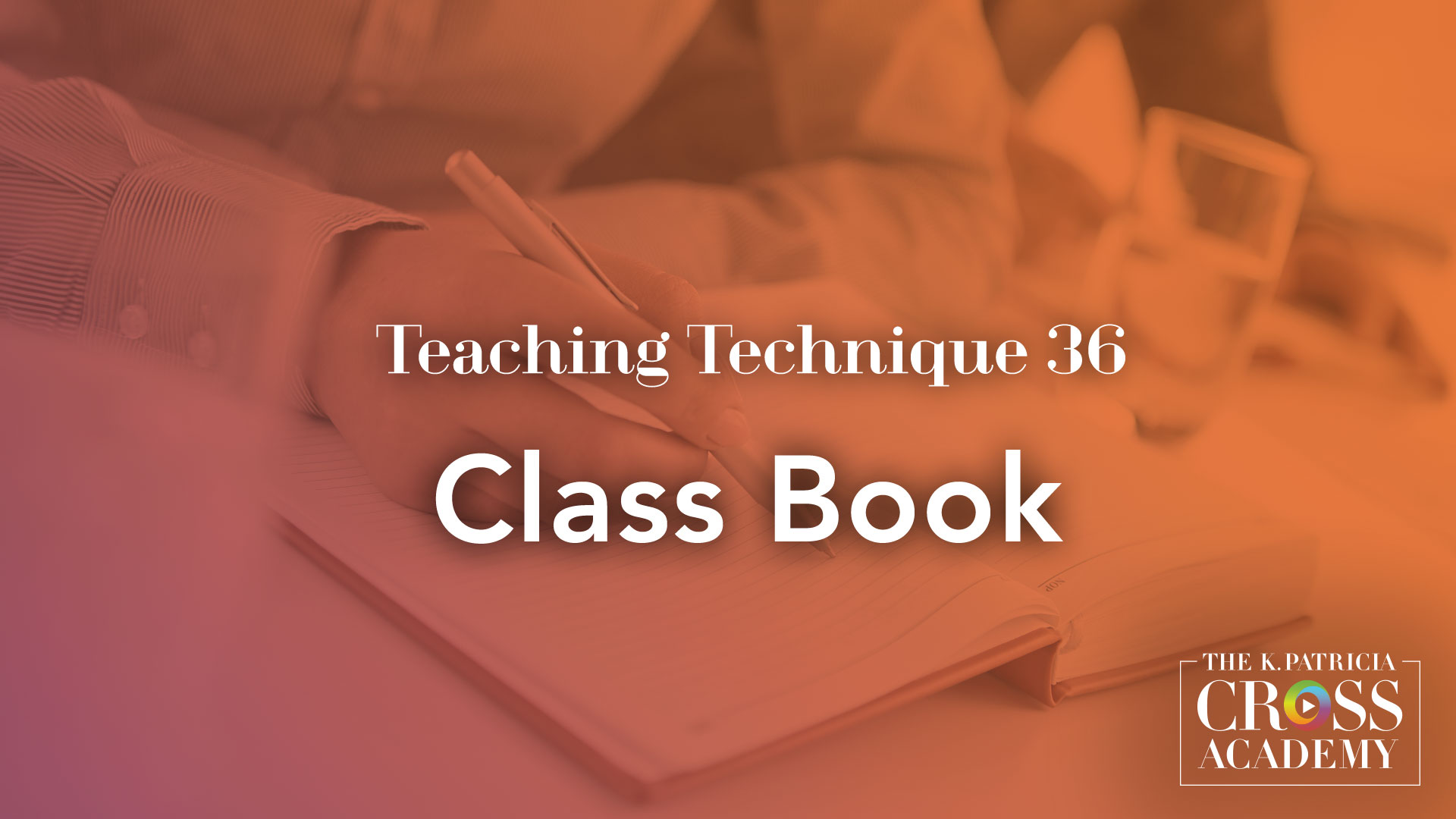
One of the most difficult challenges faculty face in a collaborative classroom is how to grade students. The fundamental issue is that individual and group accountability seem to be at odds with each other. Tradition holds that a student’s individual course grade should reflect an accurate evaluation of that student’s work and should not be influenced by the performance of other students. Individual grades on group work have the advantage of providing a straightforward method for ensuring individual accountability. Unfortunately, they also have the disadvantage of diminishing the significance of group effort.
Teachers who adopt a collaborative learning pedagogy recognize that one of its primary benefits is the deeper learning individuals can achieve through interaction with their peers. Collaborative learning has its home in social constructivism, which assumes that knowledge is produced and understood through interchanges between individuals as they together experience and make meaning. With its emphasis on the group, collaborative learning implies that the group should be held accountable for working together and supporting each other’s learning. Group grades may encourage this type of positive interdependence (Johnson et al., 1991; Slavin, 1990), but they may also create opportunities for “easy riding” or “slacking.”
The solution to the dilemma appears to be a combination of individual and group grades. When adopting this approach, there are four main components you may wish to consider: process, product, exam, or success/progress.
Main Idea
Using a combination of individual and group grades is a good approach to grading collaborative learning activities.
How do I grade the collaborative process?
Scores for group process may be based on a combination of instructor observation, self, peer, and group evaluations.
Instructor Evaluation
While facilitating group work, the instructor constantly observes the working groups and can assign grades based on the information gleaned from these evaluations. To prevent faculty evaluations from appearing subjective, use a form that specifies acceptable student behavior, such as the one shown below.
Scale: 5=Always | 4=Frequently | 3=Sometimes | 2=Rarely | 1=Never
Student Name
Stays on Task
Listens to others
Participates in discussion
Encourages team members
Consider observing each group briefly during each work session in order to document observations. Focus on a different group in each session. Consider using this information to inform a participation grade by adding the scores to determine a percentage based on this information.
Student Evaluation
Having witnessed the group process firsthand, students can provide valuable insight. The most common forms of student evaluation of learning are self-evaluation, peer evaluation, and group evaluation.
Self-Evaluation
Self-evaluation has many benefits, including encouraging students to assess their own efforts by comparing their work to their own goals and to the work of other students and by reflecting on their subject matter knowledge and skills. In these ways, self-evaluation can aid in fostering profound learning (Millis & Cottel, 1998). However, self-evaluation may present some difficulties, as students may be reluctant to give themselves positive ratings if they believe it may be viewed critically, or negative ratings, especially if they believe they will be punished for doing so. Establishing trust in the classroom, explaining the benefits of the evaluation, and making it clear how the evaluation will be used (whether for formative/improvement or summative/grading purposes) are necessary to minimize the challenges associated with self-evaluation.
Numerous faculty members design and employ structured forms for self-evaluation.
Name:
Group Number or ID:
Project Title:
Rate yourself on your performance on the project using the following scale:
Excellent=5 Good=4 Fair=3 Poor=2 No contribution=1
I was prepared to contribute to the group (e.g., material read)
I contributed my ideas
I encouraged others to participate in the group
I stayed on task
I helped others stay on task
I did my fair share of the work
Overall I fell my performance in the group should be rated:
Peer Evaluation
Students may also evaluate one another, and peer evaluation has numerous benefits. In learning to evaluate one another’s work, students first learn to evaluate themselves. Because they collaborate closely, group members have access to a wealth of information upon which to base their evaluation. The instructor is no longer the sole determinant of whether or not a student succeeds or fails when peers offer their perspectives. However, peer evaluation presents several inherent challenges. The faculty must devote time to instructing students on what and how to effectively evaluate the product or presentation because it is not a skill with which students are typically familiar. In addition to lacking skills, students may also lack confidence when evaluating their peers and be unprepared to offer constructive criticism.
Consider involving students in determining the evaluation criteria so that they take responsibility for the process, become acquainted with and invested in the criteria for evaluating competence, and then assume a sense of ownership over applying them in assessment. Once you have identified these elements, create an evaluation set of open-ended questions or a rubric based on these criteria.
Group Member's Name:
Project Title:
1
1
Not Observed
Needs Improvement
Critical Thinking
Decision Making
Problem-Solving
Communication
Outstanding
Citizenship
Listens
Adequate
2
Prepares
3
Contributes
4
Respects Others
Skills
Group Evaluation
Evaluations of the group process by group members are typically anonymous and used for improvement purposes; as such, they should take place early rather than late. This process also enables students to recognize the benefits and drawbacks of group work, which may enable them to capitalize on the advantages and mitigate the disadvantages. However, group evaluations can allow students to undermine the collaborative learning process. For instance, they may attempt to involve the instructor in conflict resolution rather than negotiating the conflicts themselves. Or they may use the activity to criticize the group work process. Alternately, they may choose to answer dishonestly to earn a higher grade. Providing structure to the evaluation can assist in discouraging unproductively negative responses to the process.
Forms may be useful for evaluating groups; Angelo and Cross (1993) suggest the following form:
1. Overall, how effectively did your group work together on this assignment?
2. Out of the five group members, how many participated actively most of the time?
3. Out of the five group members, how many were fully prepared for the activity?
4. Give one specific example of something you learned from the group that you probably wouldn't have learned working alone.
5. Give one specific example of something the other group members learned from you that they probably wouldn't have learned otherwise.
6. Suggest one change the group could make to improve its performance.
How do I grade collaborative products?
When grading a group project, simply assign the group’s average grade to each group member. This method of grading has the benefit of being simple. It also teaches students that grading is not always based on who did what, thus simulating real-world situations. However, grading a group project does not recognize individual contributions; consequently, individual accountability cannot be guaranteed. Moreover, if the task is not sufficiently difficult or complex, this grading procedure can encourage easy riding or slacking.
How do I grade collaborative exams?
Administering a group exam encourages students to study collaboratively and reduces test anxiety. Additionally, it achieves the objective of positive interdependence. To assign individuals a grade for a group exam, simply give each group member the score the group received. However, group exam grades do not reflect individual performance. A variation is to combine group and individual examinations. For example, have students first take and submit the exam as individuals, then take and submit the exam as a group. The scores from each may be added together directly, or one type may be weighted (e.g., 2/3 individual, 1/3 group).

How do I grade collaborative success/progress?
While some instructors don’t agree with the idea of awarding bonus points, others find it useful to assign bonus points to each group member if all group members achieve or exceed a predetermined level of competency. This grading system promotes positive interdependence because group members are incentivized to achieve and assist one another in order to be rewarded. However, instructors should emphasize that the points are bonus points so that students do not feel penalized when one or more of their group members perform poorly. This method can also put pressure on underperforming students, which can be positive if it motivates them to work harder or negative if it causes them to feel isolated or inferior. A variation would be to award bonus points for both achievement and improvement; this may help groups with low average scores gain points for improvement. Unfortunately, groups with high scores from the start may feel penalized.
Conclusion
Grading group work can be challenging, but with careful thought and planning, an effective grading strategy can address the concerns of balancing individual accountability with group interdependence and promotive interaction. The approaches to grading described above can help you understand and address the various issues, but it is important for you to find a solution that is consistent with your beliefs regarding the purpose of education and the requirements of the particular course. There is no single answer to the question of how to grade collaborative learning because the values of faculty, institutions, and courses vary greatly. Rather, it can be helpful to recognize that there are a variety of grading strategies applicable to collaborative work and then select the optimal combination for your particular situation.
What are some examples of Cross Academy Techniques that might benefit from implementing group grading strategies?
Here are some example Cross Academy Techniques for which to consider group grading.
With Case Studies, student teams review a real-life problem scenario in depth. Team members apply course concepts to identify and evaluate alternative approaches to solving the problem.
For a Class Book, individual students work together to plan and ultimately submit a scholarly essay or research paper. Then all students’ papers are published together.
In Test-Taking Teams, students work in groups to prepare for a test. They then take the test, first individually and next as a group.
Key Reference and Resources
Angelo, T. A., & Cross, K. P. (1993). Classroom assessment techniques (2nd ed.). Jossey-Bass.
Barkley, E. F., Major, C. H. & Cross, K. P. (2014; 2005). Collaborative learning techniques: A resource for college faculty (2nd ed). Jossey-Bass.
Gueldenzoph, L. E., & May, G. L. (2002). Collaborative peer evaluation: Best practices for group member assessments. Business Communication Quarterly, 65(1), 9-20.
Johnson, D. W., Johnson, R. T., & Smith, K. A. (1991). Cooperative learning: Increasing college faculty instructional productivity (ASHE-ERIC Higher Education Reports, No. 4). George Washington University. https://files.eric.ed.gov/fulltext/ED343465.pdf
Johnston, L., & Miles, L. (2004). Assessing contributions to group assignments. Assessment and Evaluation in Higher Education, 29(6), 751-768.
Millis, B. J., & Cottell, P. G. (1998). Cooperative learning for higher education faculty. Oryx Press.
Oakley, B., Felder, F. M., Brent, R., & Elhajj, I, (2004). Turning student groups into effective teams. Journal of Student Centered Learning, 2(1) 9-34.
Slavin, R. E. (1990). Cooperative learning: Theory, research, and practice. Allyn & Bacon.
Suggested Citation
Barkley, E. F., & Major, C. H. (n.d.). Grading group work: Tips and strategies. CrossCurrents. https://kpcrossacademy.org/grading-group-work-tips-and-strategies/

Engaged Teaching
A Handbook for College Faculty
Available now, Engaged Teaching: A Handbook for College Faculty provides college faculty with a dynamic model of what it means to be an engaged teacher and offers practical strategies and techniques for putting the model into practice.








